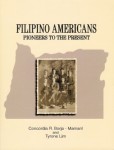|
The AACP Newsletter Asian American Curriculum Project, Inc. - Books for All Ages |
|||
|
 Manasa Venkatesan Age 7, Grade 2
 Yennie Shyu Age 9, Grade 4
 Jayshree Sarathy Age 9, Grade 4 |
|
|||||||||||||||||||
|
Asian Pacific American Heritage Month's Origins An Editorial by Leonard D. Chan |
|||||||||||||||||||||||||||
This is part three of our annual editorial on Asian Pacific American Heritage Month (APAHM). Please read our June 2004 and May 2005 newsletters to see the full text of what we've previously discussed. In brief, we have used these opportunities to point out some of the failing of the event and ways to improve it. Last year I even suggested that we move the month to February and move African American History Month to January. Some of you even sent me feedback in agreement that May is a difficult month to have such an event for students. This year I decided to do some research of the actual congressional records on the origins of Asian Pacific American Heritage Week/Month. My goal was to find out if there was any hearings, debates, and or deep thoughts given to the selection of May for APAHM and give you a report on what congress was thinking when they were creating APAHM. After a thorough searches on the Library of Congress' online database of congressional documents and two trips to the Stanford government documents library I was unable to find any real discussion and or debate given to the selection of May for APAHM.
|
In conclusion, congress' choice of May for Asian/Pacific American Heritage Month was not well thought out and relied on Jeanie Jew and her advocacy group's judgment to make its decision for May. In actuality with only 365 days in a year and each month being approximately 80f a year, there's a good chance that in any given month you'll find both good and bad historical Asian Pacific American dates within it.
Do we need Ethnic History/Heritage Months? But this statement is a little like the debate over affirmative action - when are things finally at an equal and or fairly represented state at which time you can finally have no need for such things as an Ethnic History/Heritage Month? Are we there yet? Will we still need such months when we get there? Besides for the self-esteem reasons of giving young people role models that look more like themselves, heritage months serve a societal purpose in letting all Americans know that each ethnic group has served a valuable role in shaping this nation. Knowing this simple truth helps ease the tension between the ethnic groups. No one group can claim complete superiority in its significance to America. All of the diverse groups have been important to this country and all us will continue to play a vital role. Asian Pacific American Heritage Month is needed. As long as we are able to identify ourselves as being of different groups, there will always be a need to celebrate and make known our diversity, differences, and heritage. Having a dedicate month in which to do this is certainly preferable to little or none. If a key purpose of such heritage months is to be educational and enlightening, then we should make sure that such commemorations occur in months most advantageous to students. Let's continue to reconsider the choice of May for Asian Pacific American Heritage Month. Can we do better? |
||||||||||||||||||||||||||
|
Links to Information on APAHM Origins • Asian Week's - The History of Asian Pacific American Heritage Month • The Library of Congress Thomas Database • H.J. Res. 1007 • H.R. 5572 • HR floor discussion on H.R. 5572 • Background on Jeanie Jew and Ruby Moy • Rep. Frank Jefferson Horton
APAHM General Interest |
Links to Information on the Transcontinental Railroad • wikipedia.org • Transcontinental Cover Up? • Contributions of Chinese • Nameless Builders of the Transcontinental Railroad by William F. Chew
Links to Information on Nakahama Manjiro |
||||||||||||||||||||||||||
The following books are discounted for subscribers to our newsletter. The discounts on these books end June 12, 2006. | |

|
Part Asian, 100% HapaPortraits by Kip FulbeckForeword by Sean Lennon Afterword by Paul Spickard 2006, 262 pages, Paperback. "What are you?" This is the question answered by over one hundred Hapas (people of mixed racial heritage with some Asian or Pacific Islander ancestry) for this photo/essay book project. The politically incorrect question is turned on its head by allowing Hapas to celebrate their identities. This is a fascinating book that is enlightening, and can be both serious and humorous at the same time.
View Additional Information
|

|
Tiger of the Snows
By Robert Burleigh |

|
Chinese America
By Peter Kwong and Dusanka Miscevic |

|
Filipino Americans
By Concordia R. Borja-Mamaril and Tyrone Lim |

|
LandedBy Milly LeeIllustrated by Yangsook Choi 2006, 37 pages, Hardback. After leaving his home in southeastern China, twelve-year-old Sun is held and interrogated on Angel Island before being allowed to join his merchant father in San Francisco. Author Milly Lee and illustrator Yangsook Choi once again use an actual person's real life story to create a wonderful Children's story book.
View Additional Information
|
Copyright © 2006 by Asian American Curriculum Project, Inc. (a non-profit organization since 1970)
Materials from the 2006 Growing Up Asian In America Program are Copyrighted © by the cited creators and the Asian Pacific Fund
Visit our website at AsianAmericanBooks.com
To unsubscribe simply reply to this email and type "REMOVE" in the subject line.